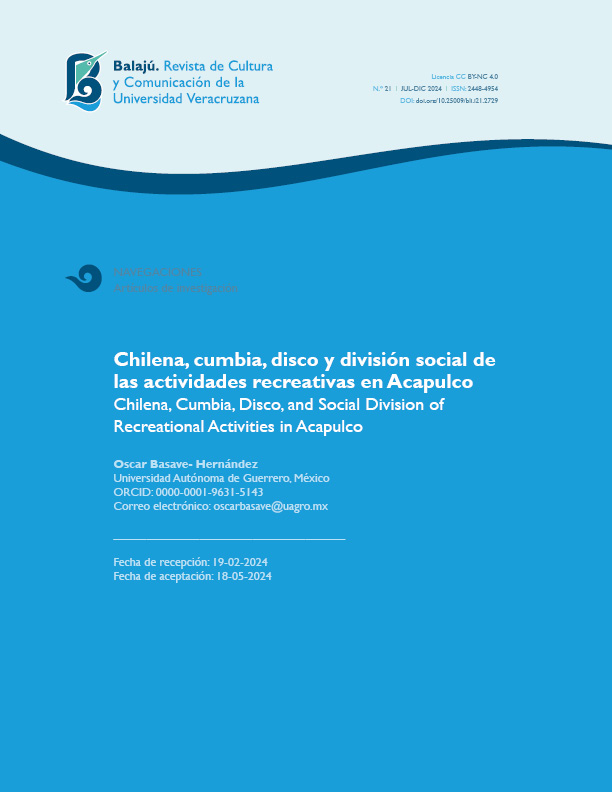Abstract
The purpose of this essay is to reflect on the social division of space for recreational activities in the consumption of three musical genres in Acapulco, Chilena, cumbia and disco, articulating historical information and interviews with people who lived that time. Both the creation and appreciation of this music are a legacy of two moments in which the city became a global meeting point for the migratory flow, fostered in the colonial era with the Feria de la Nao and in the beginnings as a tourist hub. The analysis is carried out based on the theoretical approach of Elias and Dunning (1992) on the use of free time and recreational activities, cultural consumption and its market as pointed out by Bourdieu (2011), as well as Duhau and Giglia (2016) on the social division of public space.

This work is licensed under a Creative Commons Attribution-NonCommercial 4.0 International License.
Copyright (c) 2024 Universidad Veracruzana


